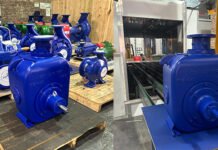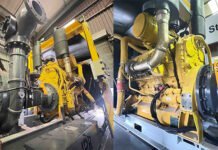Strong demand for convenient, healthier foods and beverages – produced and packaged in the most environmentally friendly way possible – is placing critical importance on sustainability at every stage of the value chain. Variable speed drives (VSDs) and high-efficiency motors can help the industry address two key sustainability challenges – energy efficiency and water conservation.
Increasing energy efficiency
In a world where corporate responsibility includes environmental consciousness, focusing on energy efficiency can help companies position themselves in a more favourable light with their stakeholders. At the same time, saving energy also contributes directly to greater profitability and meeting minimum energy efficiency legislation.

The first step is to pinpoint the most significant sources of energy usage. Look at where, when, and how much energy is used in various applications. Electric motors usually make up the bulk of a plant’s energy consumption. The good news is that there is a significant opportunity to reduce electricity usage by upgrading from inefficient motors to ultra-premium motors, like IE5 synchronous reluctance motors (SynRM).
Adding variable speed drives can also have a significant impact on energy savings. Companies can even use ABB’s EnergySave calculator to explore how much energy and money they could save by installing drives.
Traditionally, the majority of motors in factories run at full speed when they don’t always need to, wasting energy. Using VSDs allows for more control over a motor and adjusts the speed or torque according to the actual needs.
This means the motor only draws the power needed to perform the task, cutting waste. Replacing throttle valves/vanes with VSDs on pump and fan control is an excellent opportunity to save energy. Adding VSDs can unlock energy savings to its full potential – with a strong chance to reduce energy consumption between 20 to 60 percent.
READ: 3 Main causes of gearboxes failures
Modern process plants are being challenged with reducing overheads and simultaneously shortening maintenance downtime. This means that the available maintenance staff must be fully equipped with the most advanced plant information systems in order to properly plan their maintenance activities.
ABB Ability™ Smart Sensors are a cost effective solution for either pumps and/ or motors, and are designed to help planners and maintenance engineers visualise areas of the plant that need the most urgent attention, providing the necessary information needed to properly plan the corrective action without the need for costly expert site visits.
Since the smart sensors are already gathering on-line data, they can also very easily be used to quickly spot guaranteed energy saving opportunities. Data collected from the smart sensors, combined with information collected from VSDs’ inbuilt sensors and loggers, can be collated, stored, and further accessed via cloud technology. The ability to gather and analyse this data can reveal information that can be used to make performance improvements that will increase efficiency, safety, and product reliability.
Optimizing water usage
High-pressure cleaning consumes vast quantities of water. Activities such as cutting, dicing, slicing, and filleting also generate a large volume of wastewater. Minimizing the water used for process equipment and pipeline cleaning presents another challenge for food manufacturers.
One solution is to implement efficient pumping by using VSD pump controls to help optimize water usage. These controls offer several critical software functions such as regulating the pressure and flow rate for pipe clean and fill functions in Clean-In-Place (CIP) equipment. This reduces the cleaning time, resulting in less water and cleaning materials being used.
Anti-cavitation software can also detect and prevent cavitation to ensure the optimal flow of water throughout the plant an extending the pump’s lifetime. Another way to save water is to choose products that are very easy to clean – taking less time and requiring less water such as hygienic, stainless-steel washdown motors designed with smooth, crevice-free surfaces.
Sustainability is everyone’s responsibility
Running a more sustainable, energy-efficient food and beverage manufacturing plant takes work and needs both clear decisions from senior management and commitment from all levels of the organization. By prioritizing energy and water conservation, identifying the areas that need the most attention, and committing to energy and water saving initiatives, manufacturers can have a significantly positive impact on sustainability, which invariably results in reducing costs and making an organisation more competitive.





